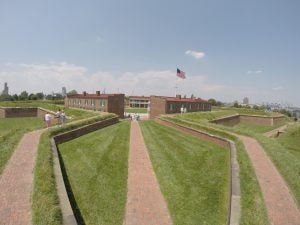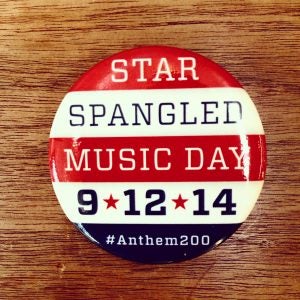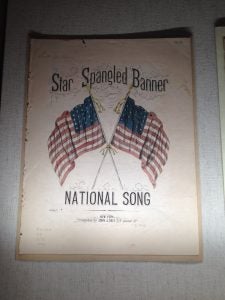The War of 1812 and the Emergence of our National Anthem
U.S. History, Writing and M.U.N. 6th–8th
Mr. Beitner St. John’s Episcopal School
This curricular project consists of a weeklong celebration in learning. My 8th grade U.S. History students and I will be spending a little over a week dissecting the War of 1812, it’s historical significance, battles, leaders, and the culmination of our national anthem.
Goals and Objectives The goals and objectives of such a lesson are clear:
At the end of our “What So Proudly We Hailed” weeklong lesson, students will be able to reconstruct the developments that led to the War of 1812, interpret “historic” paintings and musical broadsides, and analyze the lyrics meanings, all the while giving their perspective on Francis Scott Key’s observations.
Materials Needed Paper, pencils, pens, highlighters: yellow, green, pink, PDF documents, broadside printables, Poets and Patriots CD, The Battle of Fort McHenry (Official visitor center film), Dodgeballs, Paper balls, Cardboard boxes
Activities Resources and teacher guides:
What So Proudly_condensed
What So Proudly_in detail
Complete lesson plan, rubrics, handouts, quizzes, and powerpoints:
Banner Moments Lesson Plan
War of 1812_Essay Rubric
Highlighter doc analysis
Star-Spangled Banner Pop Quiz
War of 1812 PowerPoint
Vocabulary for the unit:
Impressment, embargo, blockade, port, invade, allies
Standards
- 8.5 Students analyze U.S. foreign policy in the early Republic. (Social Studies) 1. Understand the political and economic causes and consequences of the War of 1812 and know the major battles, leaders, and events that led to a final peace.
- Number and Quantities (Mathematics):Reason quantitatively and use units to solve problems. [Foundation for work with expressions, equations and functions] 1. Use units as a way to understand problems and to guide the solution of multi-step problems; choose and interpret units consistently in formulas; choose and interpret the scale and the origin in graphs and data displays.
- Reason quantitatively and use units to solve problems. (Science) [Foundation for work with expressions, equations and functions] 1. Use units as a way to understand problems and to guide the solution of multi-step problems; choose and interpret units consistently in formulas; choose and interpret the scale and the origin in graphs and data displays.
About the Author Owen Beitner 8th grade U.S. History, writing, M.U.N. and basketball coach at St. John’s Episcopal School, Rancho Santa Margarita CA
E-mail me with any questions, comments, concerns regarding lesson plans and/or practice plans: owenbeitner@gmail.com

About Banner Moments Made available as part of the 2014 Banner Moments K-12 Institute—a project of the American Music Institute of the University of Michigan and the Star Spangled Music Foundation, sponsored by the National Endowment for the Humanities




